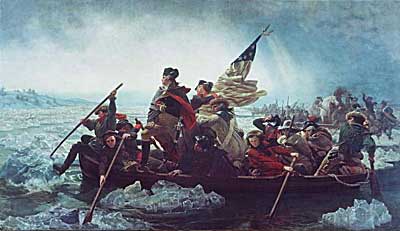Tobacco
Tobacco and Cotton were two cash
crops that were fundamental in the foundation and expansion of United States of
America. Tobacco use started to become
popular in the 15th and 16th century in Europe and
America. While many Native American
tribes originally used it, regularly smoked in “peace pipes,” these two nations
quickly adopted and expanded this plant. Initial American settlers soon found that
tobacco had a profitable market in Britain, where tobacco smoking and
“snuffing” (where they would grind it into a fine powder and snuff it up there
nose) had become fashionable. By the end
of the 17th, the “tawny weed” was grown regularly on a plantation
basis in the American colonies, with an extremely high demand from
England. As tobacco plantations expanded
across America, settlers realized they could take advantage of this opportunity,
with their vast amount of land, if they increased output – but where would they
get enough labor to do so? By purchasing thousands of slaves from the African
coast.
Cotton production grew like
wildfire in the American colonies. A great number of early settlers grew and
cultivated this plant in order to sell to Europe for profit. Similar to other plantations, growing cotton
(and to pick, gin and bale it) was very labor intensive. Like tobacco plantations, they needed a labor
force to carry out this great deal of work.
This is where slaves come in. For
both cotton plantations and slave plantations, large numbers of slaves were
acquired and brought in to work in the fields.
In 1793, Eli Whitney heightened the
cotton industry with his creation of the Cotton Gin. Now, by using a horse to turn the gin, a
single person could clean about fifty times as much cotton as they could
previously. Unfortunately, it increased
to demand for slave labor and tens of thousands of slaves were transported to
cotton fields in Georgia and South Carolina.
After inventions of the Spinning Jenny, the
Water Frame, and the Power Loom, the mechanization of new ways to improve
cotton spinning led to the Industrial Revolution, thus increasing the demand
for raw cotton in the Americas.
 Both tobacco and cotton played pivotal roles in
the foundation of America. These plants
were extremely essential to the economies of both Europe and America, and
bringing the two nations together through trade and commerce. Correspondingly, these two cash crops
required massive plantations that required a powerful and bulky workforce. While tobacco initially fostered the economy
for the southern colonies, cotton soon after took over the role as the leading
trade item. Through slavery, as horrible
as it was, these crops flourished, enriching the American colonies and
expanding the nation’s economy, power, and technology. Without tobacco and cotton, and the help of
slavery (as horrible as it was), America would not have succeeding in becoming
one of the most powerful nations in the world, at least not as quickly.
Both tobacco and cotton played pivotal roles in
the foundation of America. These plants
were extremely essential to the economies of both Europe and America, and
bringing the two nations together through trade and commerce. Correspondingly, these two cash crops
required massive plantations that required a powerful and bulky workforce. While tobacco initially fostered the economy
for the southern colonies, cotton soon after took over the role as the leading
trade item. Through slavery, as horrible
as it was, these crops flourished, enriching the American colonies and
expanding the nation’s economy, power, and technology. Without tobacco and cotton, and the help of
slavery (as horrible as it was), America would not have succeeding in becoming
one of the most powerful nations in the world, at least not as quickly.

Fun Facts!
1. Cigarettes are the single-most traded item on the planet, with approximately 1 trillion being sold from country to country each year. At a global take of more than $400 billion, it’s one of the world’s largest industries.
2. The word ‘cotton’ is derived from ‘qutun’ or ‘kutun’, an Arabic word used to describe any fine textile
3. Cotton and its by-products are used in the production of a huge range of products including bank notes, margarine, rubber and medical supplies
4. The cotton plant requires about 180 – 200 days from planting to full maturity ready for harvest
5. Cotton is a unique crop in that it is both a food and a fibre
6. Cotton dates from at least 7,000 years ago making it one of the world’s oldest known fibres
7. A tobacco plant produces between 20 and 30 leaves, and even more if buds are not removed. They are not all usable. According to the process in the field, mainly if the tobacco plants are topped or not, the grower is going to pick between 10 and 16 leaves.
Facts Sources:
http://cottonaustralia.com.au/cotton-library/fact-sheets/cotton-fact-file-interesting-cotton-facts
http://listverse.com/2009/01/11/30-fascinating-cigarette-smoking-facts/
http://www.neptunecigar.com/co/article-6_fun_facts_about_the_tobacco_plant.aspx
Photo Citations:
http://www.caes.uga.edu/commodities/fieldcrops/tobacco/images/homepage.jpg
http://www.commodityonline.com/images/7343608841405935181.jpg
http://virtualcurationmuseum.files.wordpress.com/2013/10/peace-pipe.jpg
http://georgiainfo.galileo.usg.edu/gastudiesimages/Antebellum%20Cotton%20Plantation%203.jpg
http://www.ushistory.org/gov/images/00022528.jpg
http://www.industrialrevolutionresearch.com/images/cottongin.jpg
http://www.cigarettestime.com/gallery/default/original/13498/viceroy-cigarettes-ad.jpg?1302174050
Link to Relevant Website:
http://www.pbs.org/wnet/african-americans-many-rivers-to-cross/video/the-cotton-economy-and-slavery/




Hi Tim! You made some really interesting comments about how the tobacco industry was largely responsible for the founding of America. Now that tobacco and smoking have been so heavily criticized in recent decades for harmful health effects, do you still see tobacco as a major crop in the US?
ReplyDelete